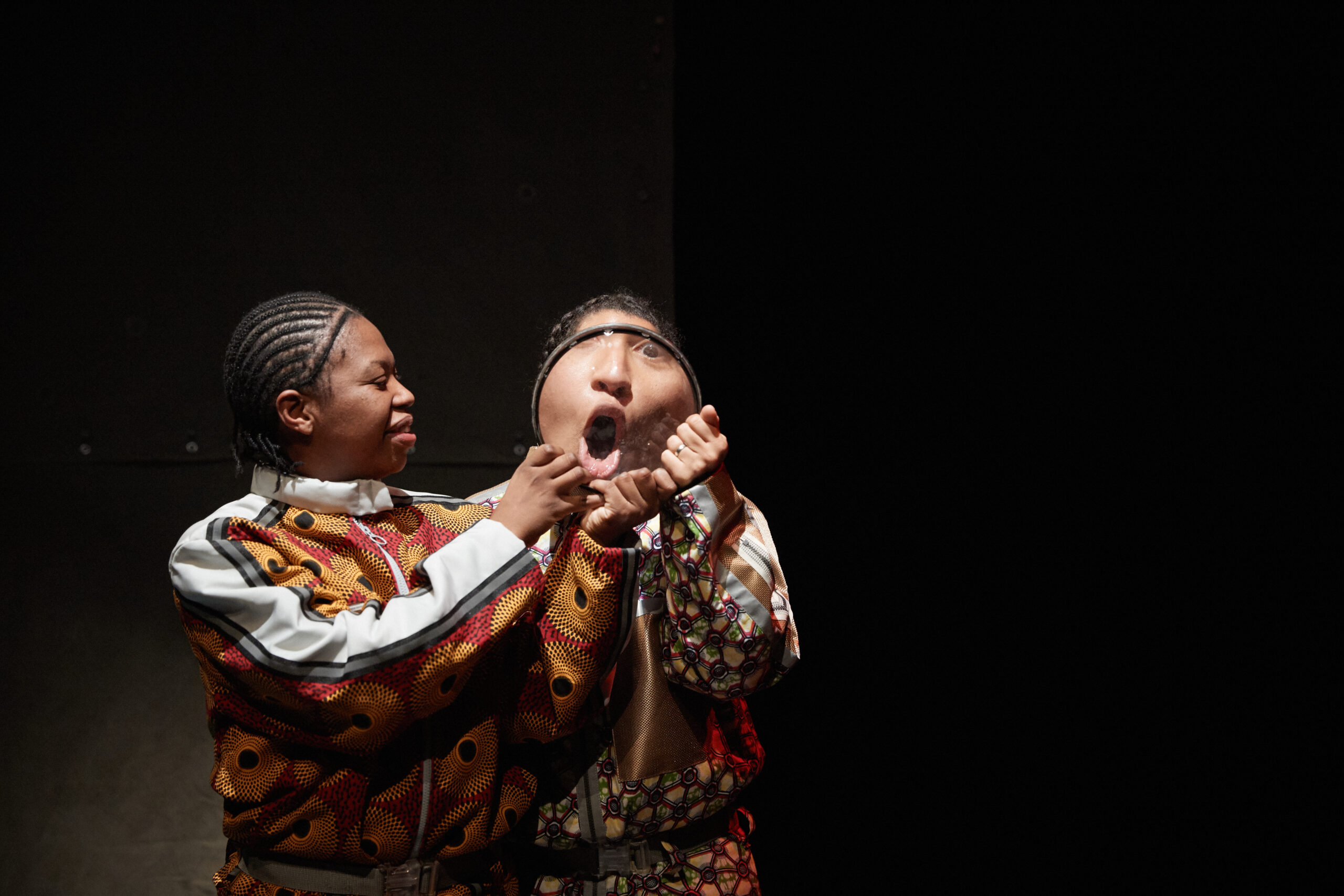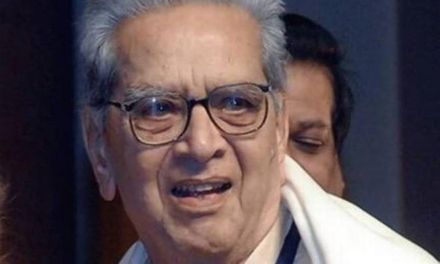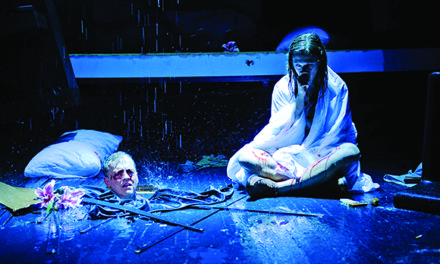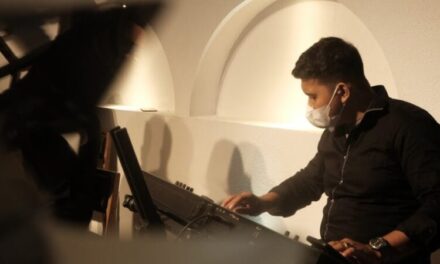Zambian scientist and teacher Edward Mukuka Nkoloso founded the Zambia National Academy of Science, Space Research and Philosophy in 1960 and wanted to launch a rocket into space on his country’s Independence Day in 1964. His declared goal was to defeat the two superpowers USA and USSR, which were in the Cold War, in the so-called “space race.” Nkoloso’s self-confident demeanor not only alienated the superpowers. Journalists from different countries visited his academy, were amazed and made fun of it in the first place.
The undertones of the articles and television reports were in unison: How can a primitive African enjoy competing with a high-tech venture like space travel, let alone being convinced that he can still win this race?
BLACK. SPACE. RACE. under the premise of Afrofuturism turns the space race into a“ race race”- a race race. Afrofuturism claims an imagined future that sees art, science and technology through a “black lens”: “The artistic movement called Afrofuturism, a decidedly black creation, is meant to go far beyond the limitations of the white imagination. It isn’t just the idea that black people will exist in the future, will use technology and science, will travel deep into space. It is the idea that we will have won the future. There exists, somewhere within us, an image in which we are whole, in which we are home. Afrofuturism is, if nothing else, an attempt to imagine what that home would be. “(Carvell Wallace, The New York Times,” Why ‘Black Panther’ is a Defining Moment for Black America). This philosophy finds expression particularly in science fiction, for example in comics such as Black Panther, the film version of which appeared at the end of January 2018.
Films such as Black Panther, which are consumed and celebrated by a broad, diverse, international and intercultural audience, prove that stories steeped in blackness have a unifying force.
BLACK. SPACE. RACE. is a theater evening about people of color who have an “agency ”- a power to act. They are free and do not submit to anyone. This depiction of blacks scratches the prevailing, postcolonial prejudices, which consciously or unconsciously continue to shape the view from whites to blacks, even in Switzerland, which now appears to be rather multicultural. The unifying power of Afro-futuristic stories like Black Panther is strengthened in the theater by its immediacy and the co-presence of the performers and spectators into the existential. We are all directly affected by discrimination and racial profiling, albeit in different ways. It would be nice if our predominantly white population could also see astronauts in their black people, instead of just drug dealers or prostitutes. So it is high time that the story of Edward Mukuka Nkoloso was negotiated here and here on stage and that there was a break with the existing biases in our society!
The story told on stage in the form of an Afrobeat performance claims a reality in which Nkoloso’s dreams come true, in which his Afronauts actually fly to the moon and Mars. The text by Urweider and Cele not only illuminates the life of this Don-Quichote-esquen figure in the future-hungry 1960s, but also extrapolates it into a future in which – according to the Afro-Futurist theory – the black race consists of extraterrestrials that all other races is technologically far superior. In the course of the evening, the audience learns that Nkoloso does not want to fly into space, but actually came to Earth from there to study the white race and its complex of superiority.
With a lot of suggestion you can reach the moon or even Mars. This power is used for BLACK. SPACE. RACE. Sought in music that condenses Nkoloso’s story into a vibrant Afrobeat show. The musical style Afrobeat lives from percussion, from the juxtaposition of jazz and funk, from long intros and ritual chanting with choral repetitions. Nigerian Fela Kuti coined and popularized the Afrobeat in the early 1960s. Appearances in the United States had a strong political influence on him. In the form of his music, he brought the revolutionary spirit of the Afro-American liberation movement back to Africa. Hence the political messages of his Afrobeat song lyrics. Künzler and Urweider composed for BLACK. SPACE. RACE. A good dozen songs.
Guest composers James Gruntz and Simon Ho contributed two songs. In their hypnotic polyrhythm, the songs are the driving, atmospheric force of the evening and structure it dramaturgically. With its thrust, the spaceship flies to the stars.
A Supersonic Afrobeat Performance
By Manaka Empowerment Prod.
Concept / Text / Direction: Ntando Cele, Raphael Urweider
Performance: Ntando Cele, Angela Kerrison, Robin Adams, Wael Sami Elkholy
Choreography: Pascale Altenburger
Composition: Maze Künzler, Raphael Urweider
Gast- Composition: James Gruntz, Simon Ho
Band: Tevfik Kuyas (bass), Maze Künzler (guitar), Ueli Kempter (keyboard), Kevin Chesham (drums), Mory Samb (percussion, Ngoni)
Dramaturgy: Barbara Boss
Stage: Renato Grob
Costumes: Rudolf Jost
Licht: Maria Liechti
Sound: Markus Luginbühl, Valerio Rodelli
Assistant director: Mirjam Berger, Sandro Griesser
Oeil exterior: Neil Coppen, Stephan Müller
Seiltechnik: Thomas Hofmann, Toprope GmbH
Photos: Janosch Abel
Graphics: Lopetz, Destruct office
Production: Manaka Empowerment Prod.
Production management: Boss & Röhrenbach
This post was written by the author in their personal capacity.The opinions expressed in this article are the author’s own and do not reflect the view of The Theatre Times, their staff or collaborators.
This post was written by Zainabu Jallo.
The views expressed here belong to the author and do not necessarily reflect our views and opinions.


















